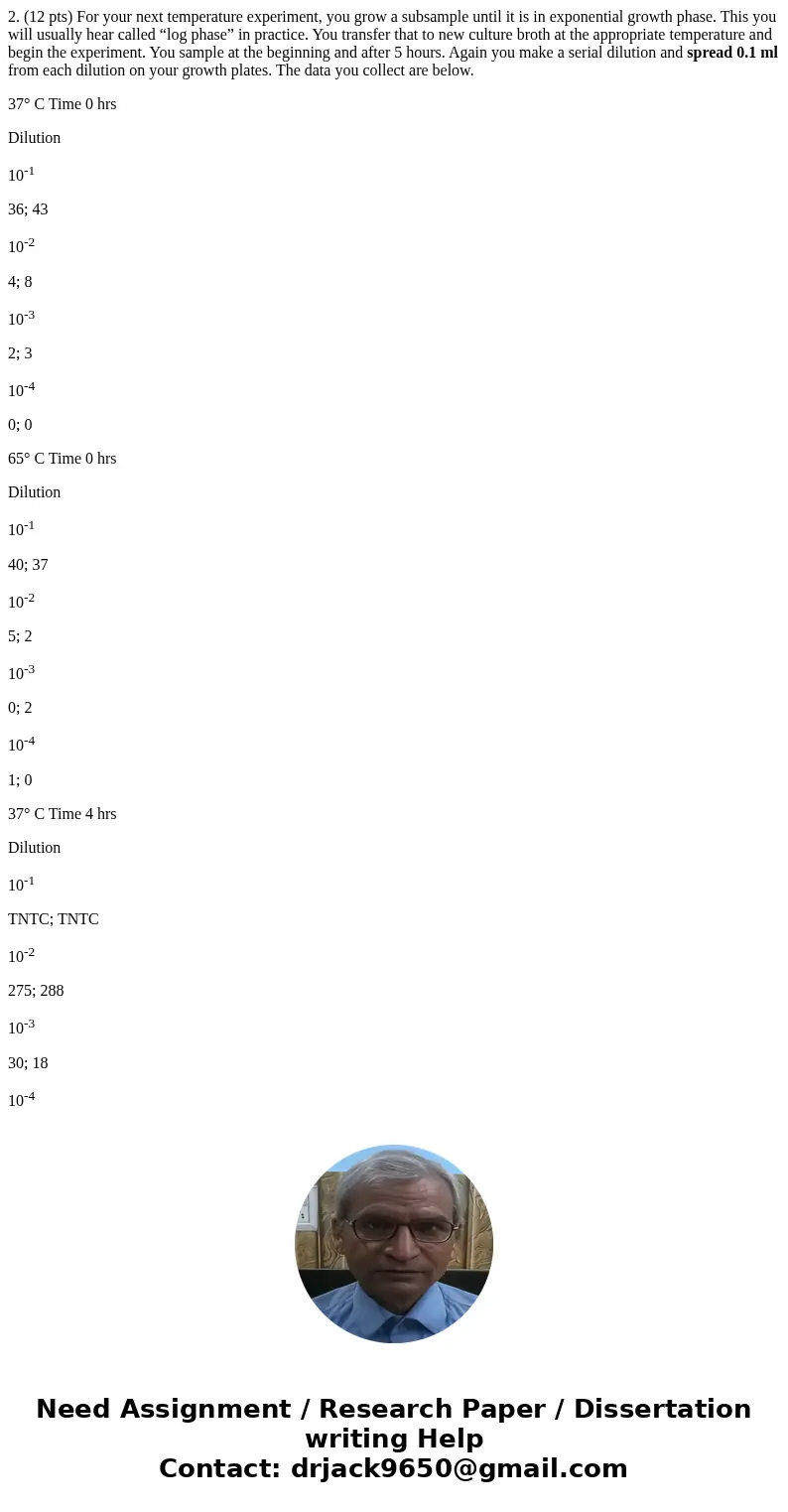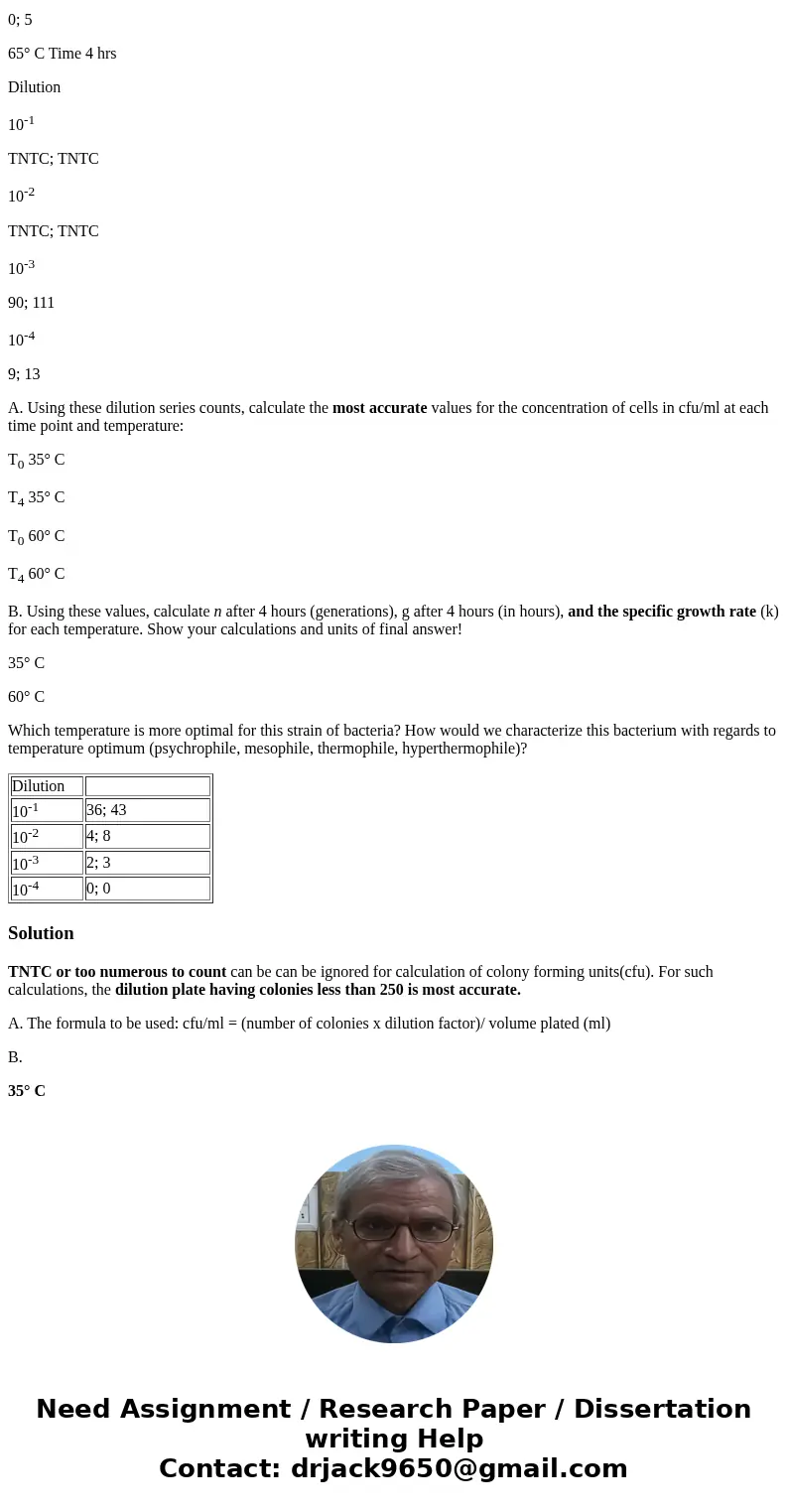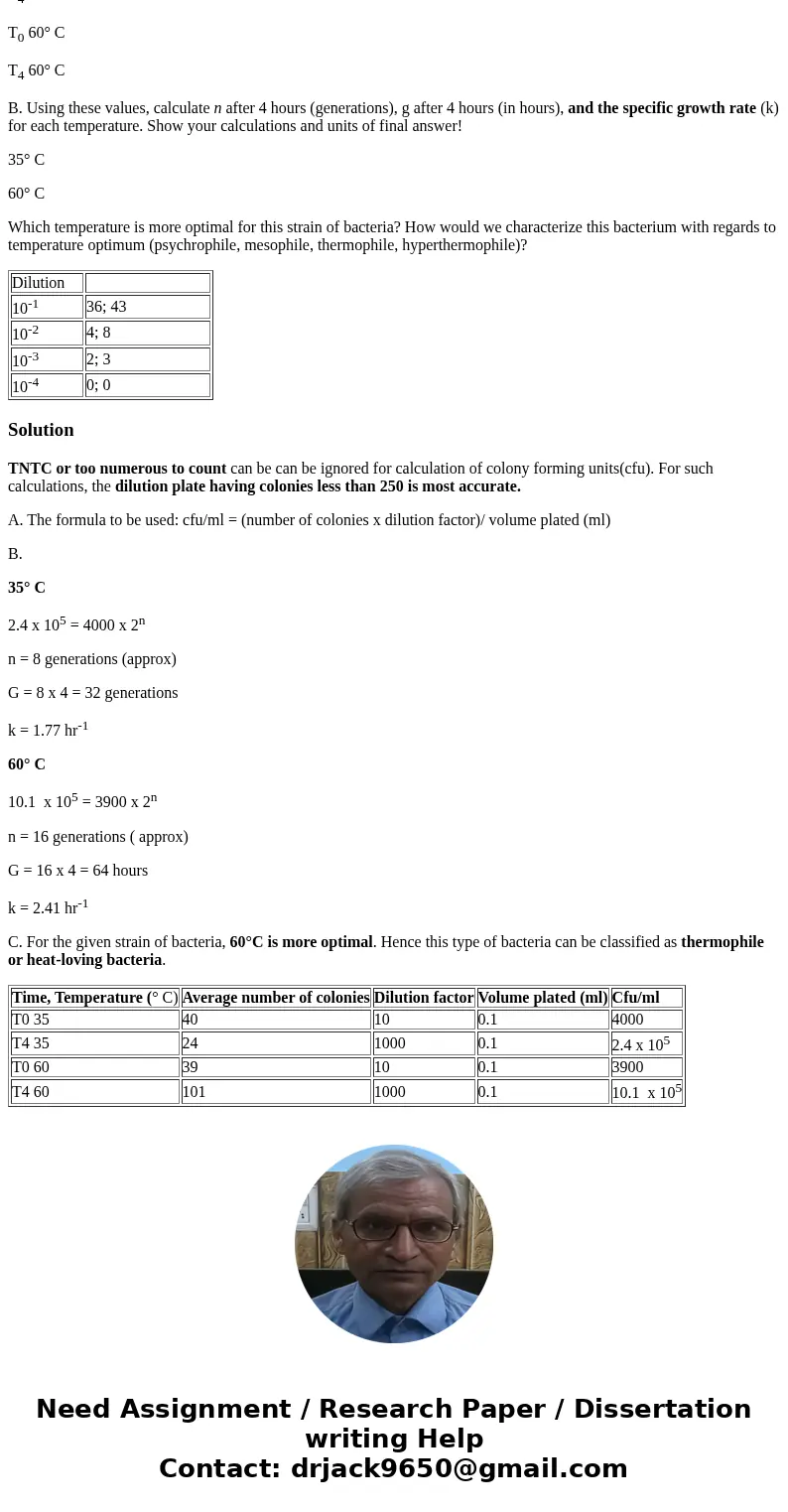2 12 pts For your next temperature experiment you grow a sub
2. (12 pts) For your next temperature experiment, you grow a subsample until it is in exponential growth phase. This you will usually hear called “log phase” in practice. You transfer that to new culture broth at the appropriate temperature and begin the experiment. You sample at the beginning and after 5 hours. Again you make a serial dilution and spread 0.1 ml from each dilution on your growth plates. The data you collect are below.
37° C Time 0 hrs
Dilution
10-1
36; 43
10-2
4; 8
10-3
2; 3
10-4
0; 0
65° C Time 0 hrs
Dilution
10-1
40; 37
10-2
5; 2
10-3
0; 2
10-4
1; 0
37° C Time 4 hrs
Dilution
10-1
TNTC; TNTC
10-2
275; 288
10-3
30; 18
10-4
0; 5
65° C Time 4 hrs
Dilution
10-1
TNTC; TNTC
10-2
TNTC; TNTC
10-3
90; 111
10-4
9; 13
A. Using these dilution series counts, calculate the most accurate values for the concentration of cells in cfu/ml at each time point and temperature:
T0 35° C
T4 35° C
T0 60° C
T4 60° C
B. Using these values, calculate n after 4 hours (generations), g after 4 hours (in hours), and the specific growth rate (k) for each temperature. Show your calculations and units of final answer!
35° C
60° C
Which temperature is more optimal for this strain of bacteria? How would we characterize this bacterium with regards to temperature optimum (psychrophile, mesophile, thermophile, hyperthermophile)?
| Dilution | |
| 10-1 | 36; 43 |
| 10-2 | 4; 8 |
| 10-3 | 2; 3 |
| 10-4 | 0; 0 |
Solution
TNTC or too numerous to count can be can be ignored for calculation of colony forming units(cfu). For such calculations, the dilution plate having colonies less than 250 is most accurate.
A. The formula to be used: cfu/ml = (number of colonies x dilution factor)/ volume plated (ml)
B.
35° C
2.4 x 105 = 4000 x 2n
n = 8 generations (approx)
G = 8 x 4 = 32 generations
k = 1.77 hr-1
60° C
10.1 x 105 = 3900 x 2n
n = 16 generations ( approx)
G = 16 x 4 = 64 hours
k = 2.41 hr-1
C. For the given strain of bacteria, 60°C is more optimal. Hence this type of bacteria can be classified as thermophile or heat-loving bacteria.
| Time, Temperature (° C) | Average number of colonies | Dilution factor | Volume plated (ml) | Cfu/ml |
| T0 35 | 40 | 10 | 0.1 | 4000 |
| T4 35 | 24 | 1000 | 0.1 | 2.4 x 105 |
| T0 60 | 39 | 10 | 0.1 | 3900 |
| T4 60 | 101 | 1000 | 0.1 | 10.1 x 105 |



 Homework Sourse
Homework Sourse